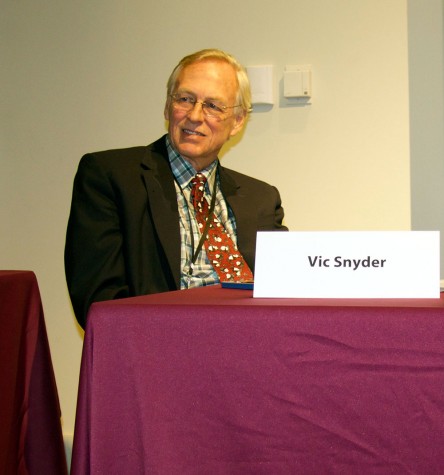Former U.S. Congressman Vic Snyder was among several featured panelists exploring the steamboat’s influence on Arkansas in a day-long educational symposium at the Arkansas Studies Institute building.
The Nov. 5 symposium sought to not only educate about the influence of steamboats, but to also address the steamboat’s impact on the economic, cultural, and historical development along the Mississippi River, according to Deborah Baldwin, associate provost of collections and archives.
Snyder served on a maritime policy and technology panel in which he discussed his tenure in Washington, particularly committee work focused on the building and funding of levees. The former congressman was quick to admit maritime policy was not one that got most constituents especially excited.
“If we were to take a poll, it would probably show how little Arkansans appreciate the vitality (and influence) of the river,” Snyder said. “These kind of symposiums help build that awareness.”
UALR History Professor Carl Moneyhon contributed to the discussion on the transportation roles of steamboats, pointing to the role steamboats played in keeping Arkansas in the Union during the Civil War. Steamboats brought firearms, supplies, and helped move federal troops into the state, he said.
Other guests included documentary film producer Mike Marshall, who contributed to the discussion of the explosion of the Sultana, near Marion, Ark., in 1865.
The explosion killed 1,800 people, surpassing the death toll of the Titanic by 300, earning its spot among the worst maritime disasters in U.S. history. Most Americans weren’t aware of the disaster because the media’s attention was on the April 14 assassination of President Lincoln and the manhunt for his killer.
The symposium was tied to the opening of a virtual exhibit that features historic documents, photographs, and works of art depicting steamboats, with the intent of examining the heritage of steamboats and their profound effect on the history and culture of Arkansas.
The Arkansas Humanities Council and the National Endowment for the Humanities awarded the center a $13,876 grant to develop the exhibit and the related educational symposium, which was free and open to the public.


